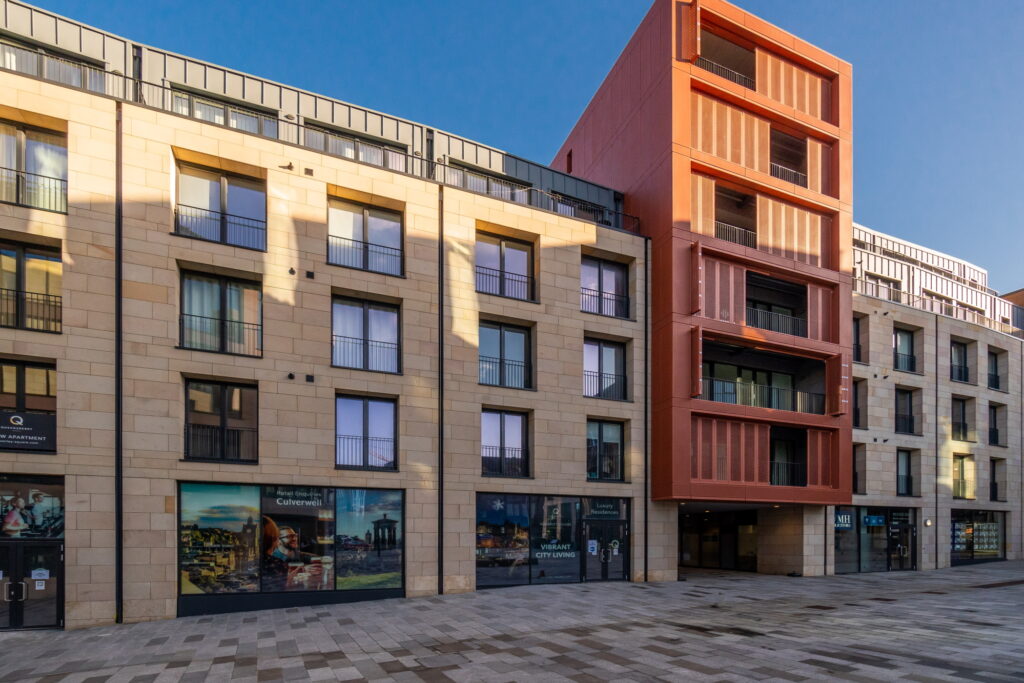In this latest article in our Insight series of in-depth analyses of all-things property, Queensberry Properties’ sales and marketing director, Hazel Davies, explains how roof spaces, although often inaccessible and underutilised, can serve as anything from communal residential gardens to a home for nature.
“It’s self-evident that every building needs a roof, yet historically, architects and builders often treated this aspect of a construction project as an afterthought. Despite presenting a generous percentage of the useable floor space from the storey immediately below, domestic attics have traditionally been left as voids. Even in apartment buildings, roofs were often perfunctory – a shallow pitch clad in generic slates or covered by a waterproof membrane.
“That’s especially surprising when you consider all the different uses rooftop space can be put to, quite apart from occasional-use storage or accommodating water tanks and television aerials.
“Following are some of the best ways to exploit rooftop space, starting with one which has historically been used in densely populated areas where development land is limited, meaning the available footprint of each building needs to be optimised…
Additional accommodation
“The burgeoning popularity of three-storey townhouses throughout the 21st century came as little surprise to students of 19th century architecture. Modern townhouses typically place a generously proportioned master bedroom suite inside a double roof coomb, with reduced head heights ameliorated by bathtubs, half-height wardrobes and dormer-windowed dressing areas. Such attic rooms were common in Victorian apartment buildings, squeezing additional accommodation into a building’s footprint (often alongside servants’ quarters or storage in the basement). Coombs, alongside the requirement to ascend multiple staircases, traditionally made attic flats more affordable than those below – providing opportunities to secure a premium address on a budget.
Energy efficiency zones
“Modern houses usually have attics which are so packed with insulating materials that flooring them may be impractical. This minimises heat loss, improving energy efficiency and lowering running costs at a time when utility bills are at record highs. Builders also recognise that a south-facing roof represents the ideal location for solar photovoltaic panels, which can be discreetly integrated alongside slate-grey tiles. Lining the underside of roof spaces with reflective foil provides a further way to trap heat inside a property, though a balancing act needs to be struck to prevent top-floor apartments becoming stuffy and overheated in hot weather.
Outside space
“A tiered multistorey building (such as Queensberry Properties’ celebrated New Waverley development in central Edinburgh) grants penthouse apartments a private patio space on top of the roof of the property below. Flat-roofed buildings can have their top decks segregated into terraces, transformed into communal gardens with benches and flowerbeds, or even (in the case of one new office development in Glasgow) used as a running track. A few post-war residential tower blocks incorporated outdoor clothes lines, giving residents an opportunity to dry laundry in a windy environment while appreciating the panoramic aspects afforded by high-rise living. Today, you’re more likely to find an observation deck than a collection of socks on top of an apartment block.
Environmental attributes
“Green roofs remain uncommon in Scotland, yet roof-level landscaping attracts all forms of nature. Grass alone can support entire ecosystems, while clever drainage could harvest rainwater and either recycle it or divert it into a water butt lower down the building. One or two forward-thinking companies have turned their office roofs into apiaries, with long waiting lists of employees wanting to tend to the beehives. Such setups are especially valuable in densely populated urban areas where green space is at a premium. The serenity of rooftop grass, hedging or even an exposed pebble bed will always be welcomed by insects and birds, let alone people. Green roofs also have excellent heat retention properties”.

